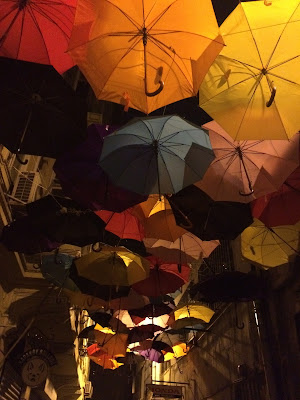There is an 8,000-volt fence on the perimeter to keep out unwanted grazers. Driving in to the compound the electric line swings high above the entrance with wires that dangle down to discourage any elephants from wandering in. This place is all about the wildlife.
Elephants are simply gigantic. Their forelegs are hinged like ours, elbow and wrist bending in opposite directions, giving their gait a daintiness that seems improbable in a creature that is 200lbs at birth and can weigh up to 7000. When they choose to challenge you, shaking their heads with ears fanned out, and begin edging toward you something in you goes a bit squidgy. They are given a wider berth by the locals than perhaps any other animal. Close seconds are the grumpy dugaboy, an old male buffalo that has been ostracized by his herd after losing to a challenging male or the famously aggressive black rhino.
Giraffes, no matter how quickly they are running, always look as though they’re moving in slow motion. They are timid creatures. When you approach they sometimes step behind a bush to hide — their heads comically (and entirely) visible — like a small kid who covers his eyes and assumes he has now become invisible. Warthogs never seem to just walk. They’re either standing or running full out, their tails sticking straight up behind them.
A crowd of baboons bounce down the hillside, coming home from the day’s foraging with little ones riding piggy back or tangled into the fur of their mother’s belly. They sit in little clusters in the waning light of day, grooming each others’ fur before climbing into the fever trees for a vicious and screechy fight to establish who gets the best roost for the night.
The white rhinos lumber along the plains, munching at the grass with their square, fat lips. No whiter than the black rhino, their name stems from a bad translation of the Afrikaans “wyd” (wide) used to distinguish them from the black rhino with its pronounced overbite. Their double horns swing just above the ground like a scythe as they shuffle peacefully along. A pair of males, Duncan and Gordon, have wandered over from nearby Lewa and lie alongside each other in the grass.
Waterbuck, impala, grant’s gazelle, hartbeest, oryx, all the herbivores happily graze alongside one another. Usually one massive horned male stands among his harem of twenty or more females. Elsewhere, little gangs of teenage males bide their time ’til it is their turn to challenge for the top spot.
Zebra are everywhere. They’ll let you get very close, no doubt confident in their ability to outrun you. Their spectacular stripes accentuate the huge muscles of their hindquarters.
A pride of lions lazes about in the hot afternoon sun. Cubs who still have their spots tumble on top of their mum, pawing gently at her face. The male doesn’t bat an eyelash except for the occasional yawn. The females get up and start toward us but collapse into a heap again after a few languid strides.
The birds are like little explosions of colour in the shrubs. Superb starlings look like our robins from the breast down but with heads and backs painted iridescent blue. Widowbirds are like long-tailed cousins of our red-winged blackbirds. Little groups of speckled guinea fowl scatter in front of us wherever we go. The dogs have a blast getting the huge kori’s bustard to take flight. Domino plover, tawny eagles, fisheagle, egyptian geese, blacksmith plover, scimitarbills, hornbills, orioles, whydahs and weavers. A birder’s paradise. We watch a cloud of european storks spin down from dizzying heights in ever narrowing circles like a cyclone, wingspans as broad as a vulture’s, their long gangly legs dangling below them as though in preparation for landing. Whiter than white egrets hover in a cloud above herds of cattle, alighting to snatch up the bugs unearthed by the cows’ hooves or to blanket the shores of the watering hole at day’s end.
There is no such thing as going out for a casual stroll in this part of Kenya. One is always somehow tethered, either within arm’s length of your shotgun-wielding guide or by radio to a vehicle trailing right behind you. Everyone has a friend or relation with a horror story about finding themselves on the wrong side of a tusk.
We head out for an afternoon walk but find our planned route blocked by a hill full of the very belligerent buffalo. Plan B finds us coming up alongside a thundering herd of elephant. A group of more than forty cows and calves moves across the bush, parallel to the track, at an astonishing clip. Every few seconds, the cow at the rear turns to look back and shake her ears as though fending off some unseen threat. We can’t spot anything behind them but they continue to charge along, little dumbos struggling to keep up. Without any sign of a predator, JJ suspects that they’ve been spooked by bees. Whatever it is it has them speeding alongside us for what seems like ages. JJ says he’s never seen anything like it.
There is nothing familiar about this place. The animals, the trees, the birds, the bugs. I feel like my vocabulary has doubled — with a few Samburu and Swahili words but mostly with the names of a wealth of creatures I never even knew existed. What these conservancies are doing to preserve this amazing variety of life is simply wonderful. I just hope Kenya can rise to the challenge of figuring out a way to use this precious resource to enrich all of its people.












































